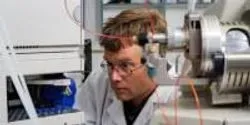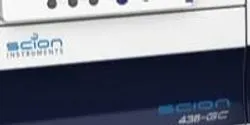Chromatography

In biopharmaceutical research and manufacturing, many processes involve sophisticated separations. One of the most advanced separation technologies is ultra-high-performance liquid chromatography (UHPLC). “There are two reasons to use UHPLC,” says Ken Cook, sales support expert, bioseparations and bio market Europe for Thermo Fisher Scientific (Waltham, MA). “The first is speed, and the second is resolution.”

Harm Moes is technical support engineer at SGS in the Netherlands. Mr. Moes has 13 years of experience in analytical instrumentation and held several technical positions with an analytical instrument supplier before joining SGS. At SGS, he provides technical support to the SGS oil, gas, and chemical labs in the Netherlands. That includes implementation and validation of new instrumentation, techniques, and methods, and instruction and training of laboratory personnel.

Two cannabis testing labs from Colorado share their thoughts on how the state’s emerging recreational marijuana industry has affected them.

Greg Martin is president of Complectors Consulting (www.complectors.com), based in Pottstown, PA, which provides consulting and training in the area of pharmaceutical analytical chemistry. Mr. Martin has over 25 years of experience in the pharmaceutical industry and was director of pharmaceutical analytical chemistry (R&D) for a major PhRMA company for a number of years. In addition, he has volunteered for the U.S. Pharmacopeia for over 10 years, and currently serves as vice chair of the General Chapters—Physical Analysis Expert Committee and also serves on expert panels on Validation and Verification; Weights and Balances’ Residual Solvents; and Use of Enzymes for Dissolution Testing of Gelatin Capsules.

Using compressed gases in the laboratory can be dangerous if they are not handled properly. Many gases can be explosive, flammable, corrosive, and toxic. Because the gases are under high pressure in tanks and cylinders, any release of gas can spread quickly and endanger lab personnel—including the possibility of
death from explosion or asphyxiation. Less-deadly safety risks include physical injuries from mishandling tanks, especially to the hands, feet, and lower back.

Thermo Fisher Scientific has developed an ion chromatography method with suppressed conductivity detection for sensitive determination of inorganic anions and carboxylic acids (fluoride, acetate, formate, mesylate, chloride, nitrate, succinate, malonate, sulfate, and oxalate) in airborne particulate matter (PM2.5).














